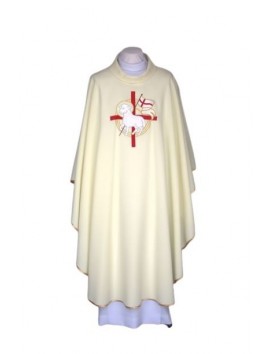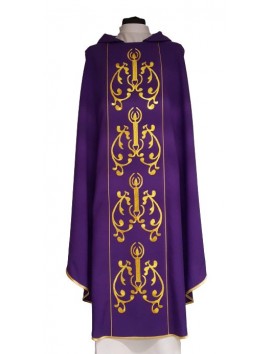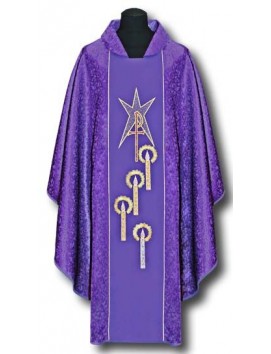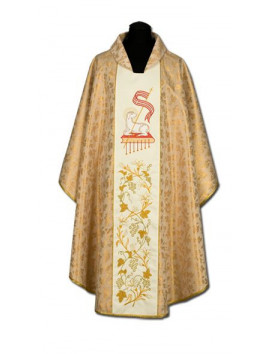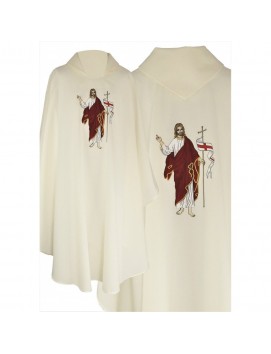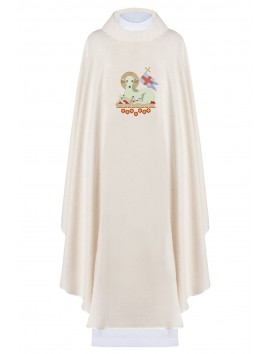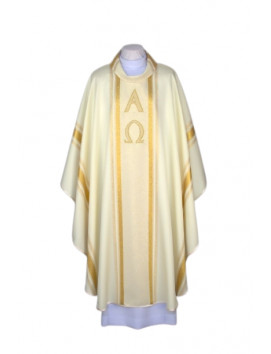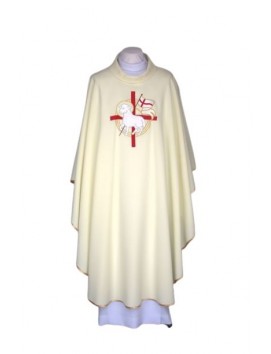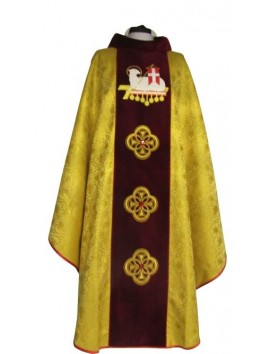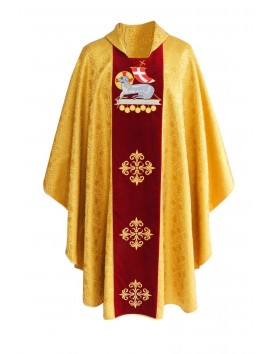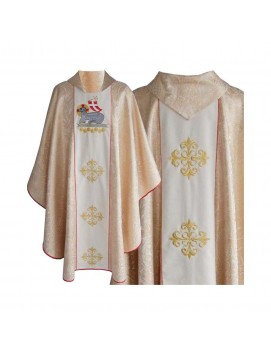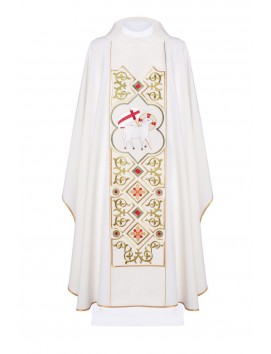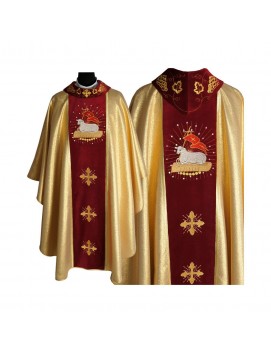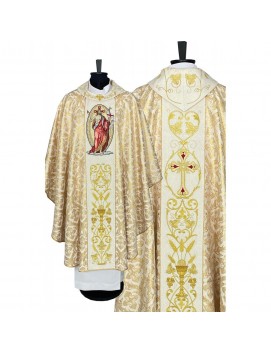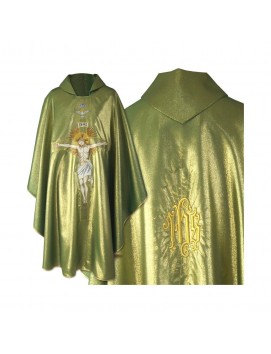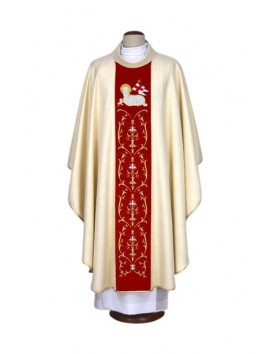No products
Easter chasubles
Easter chasubles are a type of liturgical vestment worn by Catholic priests during the Easter season, which is one of the most important holidays in the Catholic Church. They are typically white or gold, which symbolizes regeneration. Easter chasubles are often embroidered with images related to the Resurrection of Christ, such as the Lamb of God or an image of Christ with his hands pointing to the heavens. They are made with the utmost care and attention to detail, and are often handcrafted.
Easter chasubles are a type of liturgical vestment worn by Catholic priests during the Easter season, which is one of the most important holidays in the Catholic Church. They are typically white or gold, which symbolizes regeneration. Easter chasubles are often embroidered with images related to the Resurrection of Christ, such as the Lamb of God or an image of Christ with his hands pointing to the heavens. They are made with the utmost care and attention to detail, and are often handcrafted.
-
Gold chasuble Alpha and Omega (A3) Gold chasuble Alpha and Omega (A3)
Gold chasuble Alpha and Omega (A3) Gold chasuble Alpha and...
$ 282
Unveiling the Splendor of Easter Chasubles
Easter chasubles are not just garments; they are a tapestry of faith, tradition, and celebration woven into the very fabric of the Easter liturgy. As we delve into the world of these sacred vestments, we uncover the layers of symbolism, history, and spiritual significance that make Easter chasubles a central piece in the celebration of the Resurrection of Jesus Christ.
The Symbolism Behind Easter Chasubles
Easter chasubles are steeped in symbolism, each color and design element echoing the triumphant message of Easter, with green symbolizing regeneration. Predominantly, white and gold chasubles are donned during Easter celebrations, symbolizing purity, joy, and the glory of the Resurrection. White, as a symbol of purity and light, reflects the victory of light over darkness, while gold represents the triumph and kingship of Christ.
A Journey Through Time: The Evolution of Easter Chasubles
The chasuble has undergone a fascinating evolution, from its origins as a simple Roman garment to the ornate liturgical vestment we see today. Initially designed for practicality, the chasuble was a conical cloak that offered warmth and protection. Over centuries, it transformed into a symbol of the priestly office and a canvas for Christian artistry. The modern Easter chasuble, with its ample form and rich decorations, is a testament to this historical journey, blending ancient tradition with contemporary faith expression.
Choosing the Right Easter Chasuble
When selecting an Easter chasuble, the focus is on materials that reflect the solemnity and joy of the occasion. Hand-embroidered chasubles made of high-quality materials, adorned with symbols of the Resurrection, are particularly sought after. These vestments not only enhance the beauty of the Easter liturgy but also serve as a visual catechesis, teaching the faithful about the core truths of their faith.
Frequently Asked Questions About Easter Chasubles
Why are white and gold the preferred colors for Easter chasubles?
White and gold are chosen for their symbolic meanings—white for purity and joy, and gold for glory and triumph, both reflecting the essence of the Easter celebration.
Can other colors be used for Easter chasubles?
While white and gold are traditional, variations exist depending on regional practices and the specific liturgical calendar. However, these two colors remain the most universally recognized for Easter.
How do Easter chasubles differ from those used in other liturgical seasons?
Easter chasubles often feature specific symbols, such as the Resurrected Christ or the Lamb of God, which are particularly associated with the Easter narrative. The materials and colors used also set them apart, emphasizing the festive nature of the season.
In Conclusion
Easter chasubles are more than just part of the liturgical wardrobe; they are a vibrant expression of Easter joy and a reminder of the Christian hope in the Resurrection. As we don't have these sacred garments each year, we are invited to reflect on the profound mysteries they represent and to celebrate with renewed faith the victory of life over death.

